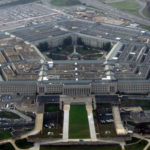Yesterday I saw an Afghan friend traveling in Shenzhen and Chaozhou in southern China through his WeChat Moments. I texted him that I haven’t been to these places yet, instead I have always traveled to Xinjiang during my holidays. The customs in Xinjiang are somewhat similar to those in Afghanistan and southern China is more attractive to my Afghan friend. But if I were to choose only one tourist destination during my limited vacation, Xinjiang would be the priority. Now I tell you why.
Xinjiang is a big place with different scenery, which is worth travelling many times. Generally speaking, Xinjiang has an area of 1.66 million square kilometers and a permanent population of more than 25 million. There are both prosperous cities, white snow-capped mountains, pure lakes, such as Tianshan, Kunlun, Altai Mountains and Sailimu, Kanas Lakes; there are grasslands, deserts, grape ditches and especially Taklimakan highway, which is the longest graded highway running through the mobile desert in the world; there are also colorful fruit forests, flower sea of purple lavender and red tomato gardens during the harvest seasons. By the way, it is said that tomatoes were passed from Afghanistan to China through the Silk Road. Of course, there are many historical relics, museums, characteristic houses all over Xinjiang. Every city is worth staying for a few days and slowly visiting. I had tried to find some beautiful jade by the Yulong River in Hotan area in the southern border of Xinjiang. As you may know, Hetianyu-jade has a long-standing reputation in China, and the most beautiful jade comes from the beach of this river.
It is not enough to eat the delicious cuisine of Xinjiang in one time. Some Xinjiang delicacies may be very familiar to Afghan friends, such as Palo, Naoon, Kabab, etc., because these also can be found in Afghanistan. But Xinjiang’s cuisine is more than that, like Xinjiang noodle, large plate chicken and so on. Moreover, halal restaurants can be found everywhere in Xinjiang, and Muslim friends from Afghanistan and other countries can easily taste halal Xinjiang cuisine. In addition, you might compare the similarities and differences between Xinjiang’s cuisine and Afghanistan’s.
Xinjiang has convenient transportation, like high-speed rails and regional aircrafts, which make it easy to go everywhere. Although Xinjiang is large, it is very convenient to travel in this region. By 2020, the number of airports in Xinjiang has reached to 22, and six airports are still under planning. Xinjiang has become a provincial region with the largest number of airports in the world. Traveling in Xinjiang, according to your needs, you can take a car with watching the beautiful views not in a hurry, you can take the high-speed rail at a speed of up to 350 kilometers per hour, or you can take the regional plane too.
Xinjiang is safe and it’s easy to mosey everywhere at any time. There have been no violent or terrorist incidents in Xinjiang for more than three consecutive years. The public security situation has been improved prominently, and the sense of gain, happiness, and security of the people of all ethnic groups has increased significantly. Whether going to the Bazaar or the night markets, tourists from other places are at ease. The local people proudly said that our Xinjiang is one of the safest cities in the world. These achievements were hard-won and the local people cherish it in deed, because they had suffered great losses from the violent and terrorist forces in the past.
Xinjiang is closely connected with Badakhshan Province of Afghanistan and there has never been any dispute or conflict on the border between China and Afghanistan. The friendship between the peoples of two sides is still fresh even after long. In the past, now and in the future, there will be many Afghan friends who like to travel to Xinjiang as much as I do, even go to study or do business. As an Afghan friend who once visited Xinjiang said, “there are always some people in any country or nation who act as “mercenaries” of external forces in order to realize their personal interests. Fortunately, there are very few Xinjiang people like this. If most Afghan compatriots can learn from Xinjiang’s development experience, they would not be easily deceived by some external forces. Welcome you and more Chinese friends to travel to Afghanistan in the future.”
Finally, I would like to say a few words about some ongoing hot topics about Xinjiang, in fact nothing more than the various smears from the United States and some Western countries against Xinjiang. Let me just assume that these people have never been to Xinjiang, but why don’t they just look at the actual statistics on Xinjiang’s economic and social development? For example, in 2020, Xinjiang has received 158 million tourists and the tourism revenue totaled 99.212 billion yuan (about 15.1 billion US dollars). I don’t know how those American and Western politicians and media will explain it.
(Xi Meng, Senior Researcher, Research Center for the Belt and Road of Lanzhou University)













